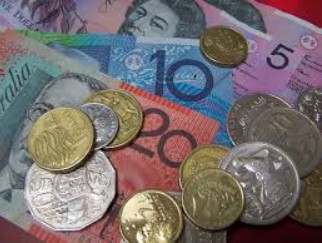Australia Unveils New Cost-of-Living Relief and Tax Cuts Amid Economic Challenges

Government Responds to Voter Concerns with Bold Economic Measures
In a strategic move to address rising voter discontent, the Australian government has unveiled a series of new measures aimed at easing the cost of living and providing tax relief to households across the nation. The announcement, made by Australian Treasurer Jim Chalmers in his fourth budget speech, highlights the government’s commitment to supporting citizens amid a backdrop of growing economic pressures.
These new measures come as Australia grapples with mounting global challenges, including geopolitical tensions, trade disputes, and inflationary pressures that have affected everyday Australians. With the government’s focus on addressing the financial strain felt by many, these steps mark a significant shift in policy aimed at providing immediate relief to consumers and stimulating economic resilience.
New Cost-of-Living Relief and Tax Cuts
The centerpiece of the government’s announcement is a comprehensive package of cost-of-living relief, which is designed to help ease the burden on Australian families. This includes direct financial support for low- and middle-income households, as well as targeted tax cuts intended to put more money in the pockets of workers.
Treasurer Jim Chalmers emphasized that these measures were essential to support Australian families who have been struggling with the rising cost of groceries, housing, and energy bills. “These steps are about ensuring that Australians can continue to live comfortably and securely as we navigate through difficult global circumstances,” Chalmers said in his speech.
The tax cuts, which will take effect in the coming months, are aimed at providing relief to middle-income earners, helping to alleviate financial pressures and stimulate consumer spending. The government hopes that by boosting disposable income, Australians will have more financial flexibility to weather the economic challenges ahead.
Balancing Relief with Economic Competitiveness
While the cost-of-living relief and tax cuts are expected to be popular with voters, the government’s announcement comes with a price. The measures will contribute to a budget deficit, as the government prioritizes short-term relief over fiscal austerity. Chalmers acknowledged the trade-off between supporting households and maintaining long-term fiscal health but emphasized the need for immediate action to address pressing concerns.
In addition to the relief measures, the government also unveiled plans to enhance Australia’s economic competitiveness and resilience in the face of ongoing global disruptions. These measures include investments in key sectors such as technology, renewable energy, and infrastructure, which the government believes will strengthen the country’s economy and create long-term growth opportunities.
“While we are focused on providing immediate relief, we are also making strategic investments that will ensure Australia remains competitive on the global stage,” Chalmers explained. These investments are seen as vital to diversifying the economy and reducing reliance on industries that are vulnerable to external shocks, such as mining and fossil fuels.
The Impact of Global Challenges
Australia’s budgetary decisions are being made against a backdrop of significant global challenges. Geopolitical tensions, particularly in the Asia-Pacific region, have had an impact on trade relations, while global inflation and supply chain disruptions continue to strain the economy. With these external pressures, the government’s approach aims to balance immediate relief with long-term strategies that will position Australia to better withstand future economic shocks.
In his speech, Chalmers highlighted that these budget measures are designed not just to address current concerns but also to position Australia for resilience in the future. The government’s focus on enhancing competitiveness, particularly through green energy and technology, signals a forward-looking approach to navigating an increasingly uncertain global economic environment.
A Delicate Balance: Short-Term Relief vs. Long-Term Stability
While the cost-of-living relief and tax cuts are expected to provide immediate benefits to Australian citizens, there is a balancing act at play. The budget deficit resulting from these measures raises questions about the country’s long-term fiscal health and the potential impact on public debt. Critics have raised concerns that these short-term relief packages could undermine the government’s ability to address long-term structural issues, including healthcare and infrastructure funding.
Nevertheless, the government is confident that these measures will not only assist Australian families but also support broader economic stability. With global uncertainties continuing to create challenges, the government’s approach seeks to ensure that Australia can navigate these disruptions while fostering growth and protecting the wellbeing of its citizens.
Conclusion
Australia’s new cost-of-living relief and tax cuts reflect the government’s commitment to responding to voter concerns and providing financial support in a time of global uncertainty. Treasurer Jim Chalmers has struck a delicate balance between short-term relief for households and long-term strategies to enhance the country’s economic competitiveness. As Australia faces mounting external challenges, the government’s decisions aim to safeguard both immediate welfare and future economic resilience, ensuring that the nation remains agile in the face of evolving global dynamics.
